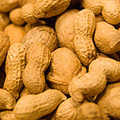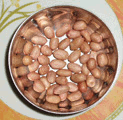The Tuba-tuba Plant (Jatropha curcas)
Also known as Tubang Bakod in Tagalog, Physic Nut in English or interchangeably tuba-tuba or Jatropha. The latest craze to hit the agri-business in the Philippines. Cultivated primarily for its oil to produce biodiesel. The Tuba-tuba has been planted in the Philippines for quite some time but it was used mainly as fencing since it animals do not eat the leaves -even the insatiable goat would not eat the leaves. The ever increasing price of petroleum prices has triggered interest on the Tuba-tuba or Jatropha.
Jatropha is a drought resistant perennial shrub or small tree that produces seeds up to 35 years but can live up to 50 years. Jatropha grows fast with little or no maintenance and reaches the average height of about 3 meters but it can grow up to 8 meters.
Tuba-tuba is one of the most promising sources of bio-fuel today. About 30% of the Tuba-tuba nut is composed of oil. 3 kilos of Jatropha seeds can produce about 1 liter of crude Jatropha oil that can then be processed into biodiesel fuel. This oil can be easily be processed into fuel that can replace or mixed with petroleum based diesel to save on imported oil and most importantly increase local employment and help the economy to grow.
Since the Jatropha plant's average height is about three meters, harvesting is easy and the plant can be grown practically anywhere (ordinary soil, sandy, gravely or rocky soil) and adapts easily to different climates. Jatropha is resistant to droughts -it can stand up to two years without rainfall. The tree also has a short gestation period, it will bear a several fruits starting at about 6 months old and be fully fruit bearing between one to two years.
Other Benefits of Planting Tuba-tuba/Jatropha:
- Aside from using the seed oil as biodiesel, the extracted oil can also be used in making soap.
- The Jatropha/Tuba-tuba leaves can be used for fumigating houses to expel bugs.
- The root extract of Jatropha plant can be used as yellow die while the bark extract as blue dye. While the seeds when pounded can be used for tanning.
- The roots, flowers and latex of the Jatropha plant are said to have medicinal properties.
- Planting Jatropha reduces soil degradation, erosion and deforestation of the countryside.
Planting the Tuba-Tuba:
Irrigated land can be planted with up to 2,500 Jatropha plants per hectare - a spacing or two meters by two meters. But on poor soil, and land dependent only on rainfall, the plants should be spaced further apart. A month or two before the start of rainy season is a good time to plant. Jatropha seeds can directly be planted or 2 to 3 month old seedlings from nurseries can be used. Jatropha seedling or cutting is planted then covered on an up-hill manner to avoid erosion. The plants are watered for two weeks after transplanting. Seeds can usually be harvested 1 year after planting. Potential yield ranges from 1.25 to 12.5 tons of seeds per hectare.
Process of Oil Extraction:
Oil is easily extracted from the Tuba-tuba nut by the use of a presser-expeller. This engine driven machine is simple enough to be operated in provinces by village folks. The yield is about 1 liter of oil for every 3 kilos of seeds. The oil is then refined to produce biodiesel.
It has been estimated that for a processing plant (presser-expeller) to be economically viable and have continuous supply of the Jatropha nut, 5,000 hectares of land have to be planted with Jatropha trees. The trees can also be planted on coconut plantations - intercropping the Tuba-tuba/ Jatropha under the coconut trees. With proper weeding, pruning, ploughing and fertilization, up to 20 kilos of seeds can be harvested per tree - up to 0.40 metric tons per hectare for non-irrigated land and up to 2.5 metric tons of seed per year if the land is irrigated. This is a boost for coconut farmers and land owners alike.
In the Philippines, planting of Jatropha or Tuba-tuba is on high gear, more so in Visayas & Mindanao but it can be planted anywhere. The Philippine Coconut Authority (PCA) is actively promoting its planting to coconut farmers.
With the ever increasing interest in biodiesel fuels, we may one day get used to the idea that fuel for our vehicles was harvested from local plantations instead of using imported oil from the Middle East.
http://www.philippineherbalmedicine.org/tuba-tuba.htm




